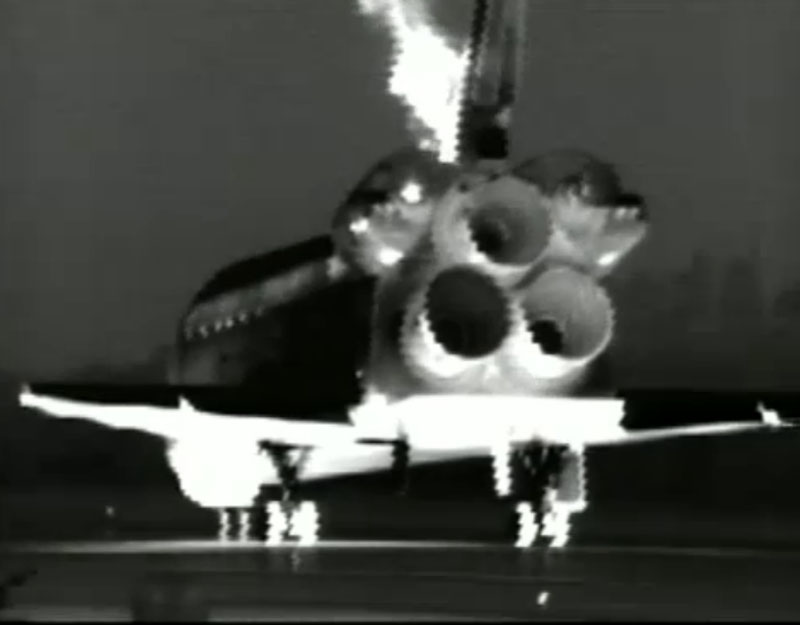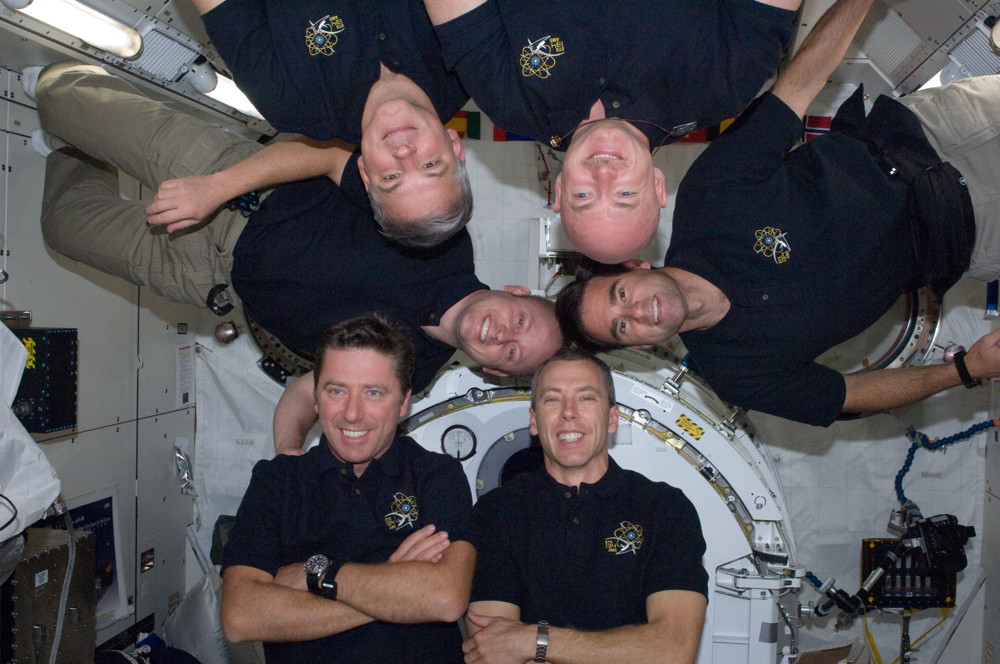Space Shuttle Endeavour Returns to Earth After Final Mission
CAPE CANAVERAL, Fla. – In the dark, early morning hours, NASA's space shuttle Endeavour landed for the final time today (June 1), ending its last space mission and returning to Earth for good.
Endeavour, the youngest shuttle in NASA's orbiter fleet, touched down here at Kennedy Space Center at 2:34 a.m. EDT (0634 GMT), wrapping up a demanding 16-day mission to the International Space Station. After travelling more than 122 million miles over the course of 25 missions, Endeavour's wheels rolled to a stop for the final time on Runway 15 at the Florida spaceport's Shuttle Landing Facility.
"Welcome home, Endeavour," Mission Control radioed the shuttle crew after landing.
"Thank you, Houston," replied Endeavour commander Mark Kelly, adding that the shuttle is "really an incredible ship." "On behalf of my entire crew, I want to thank every person who's worked to get this mission going and every person who's worked on Endeavour. It's sad to see her land for the last time, but she really has a great legacy." [Video: Shuttle Endeavour Lands After Final Voyage]
The landing marked the end of NASA's 134th shuttle mission since flights began in 1981. It was NASA's second-to-last shuttle mission with only the final voyage of Atlantis remaining before NASA shuts down its space shuttle program after 30 years of service.

The good ship Endeavour
Endeavour launched on its 25th and final mission on May 16 to deliver a $2 billion astrophysics experiment, called the Alpha Magnetic Spectrometer, and extra supplies to the International Space Station. The orbiter spent 11 days, 17 hours and 41 minutes parked at the orbiting outpost. [Photos: Shuttle Endeavour's Final Mission]
Get the Space.com Newsletter
Breaking space news, the latest updates on rocket launches, skywatching events and more!
"We are very proud of Endeavour's legacy, and this penultimate flight of the space shuttle program once again demonstrated the amazing skill and dedication of our astronauts and the entire workforce," Bolden said in a statement after the shuttle landed. "As we begin the transition from the shuttle program to the commercial transportation of our crews and cargo, our ability to tackle big challenges remains steadfast and will ensure that NASA reaches even more destinations farther in the solar system."

Shuttle commander Kelly, pilot Greg H. Johnson and mission specialists Greg Chamitoff, Mike Fincke, Andrew Feustel and Roberto Vittori delivered and installed the Alpha Magnetic Spectrometer on the exterior of the station's starboard truss. The particle physics detector will measure high-energy cosmic rays, and search for signs of antimatter and mysterious dark matter in the universe.
"We got the Alpha Magnetic Spectrometer installed, which is a remarkable thing for physics and for science," Kelly said before Endeavour undocked from the space station. "We're looking forward to hearing what those discoveries are."
The crew performed four spacewalks to make upgrades to the station. The fourth and final outing marked the final spacewalk ever taken by members of a shuttle crew. [Amazing Spacewalk Photos of Endeavour at Space Station]
On its last trip into space, the orbiter tacked more than 6 million miles onto its odometer, bringing the shuttle's total distance travelled to over 122 million miles.
NASA has one final shuttle mission planned before its 30-year space shuttle program is retired for good. The STS-135 flight of Atlantis is scheduled to launch on a supply mission to the International Space Station in early July.
Earlier tonight, Atlantis made its final slow crawl to the launch pad in advance of its targeted launch on July 8. In a rare passing of two shuttles in the night, Atlantis should reach the pad about an hour after Endeavour's landing.
Endeavour's legacy in space
NASA's space shuttles have played instrumental roles in the construction of the space station, and Endeavour made 12 visits to the orbiting complex in 25 flights. The shuttle delivered and attached the station's first U.S. segment, the Unity node, in December 1998.
Endeavour went on to haul up crucial segments of the station, including sections of the backbone-like truss, solar arrays, the Tranquility module, Cupola observatory, and most recently the Alpha Magnetic Spectrometer.
Now that Endeavour is on the ground again, the shuttle will begin the next Earth-bound phase of its career: being prepared for public display at a museum.
Four institutions across the country were selected by NASA chief Charles Bolden to display Discovery, Atlantis, Endeavour and the test vehicle Enterprise, following the retirement of the agency's shuttle program.
"It's very bittersweet," pilot Johnson said in an in-flight interview. "I just love this vehicle. I fell in love with this vehicle the first time I got to fly, three years ago on STS-123. She's performed absolutely magnificently. This vehicle is a wonderful machine and it's an honor and a privilege for each one of us to be a part of her final flight."
Endeavour has been promised to the California Science Center in Los Angeles. The months-long decommissioning process after the shuttle lands will make sure Endeavour is properly decontaminated and safe for the exhibit.
Discovery will find a home at the Smithsonian Air and Space Museum in Washington, D.C.; Atlantis will be showcased at the visitor center at Kennedy Space Center; and Enterprise will be moved to the Intrepid Sea, Air & Space Museum in New York City.
You can follow SPACE.com Staff Writer Denise Chow on Twitter @denisechow. Visit SPACE.com for complete coverage of Endeavour's final mission STS-134 or follow us @Spacedotcom and on Facebook.
Join our Space Forums to keep talking space on the latest missions, night sky and more! And if you have a news tip, correction or comment, let us know at: community@space.com.

Denise Chow is a former Space.com staff writer who then worked as assistant managing editor at Live Science before moving to NBC News as a science reporter, where she focuses on general science and climate change. She spent two years with Space.com, writing about rocket launches and covering NASA's final three space shuttle missions, before joining the Live Science team in 2013. A Canadian transplant, Denise has a bachelor's degree from the University of Toronto, and a master's degree in journalism from New York University. At NBC News, Denise covers general science and climate change.









